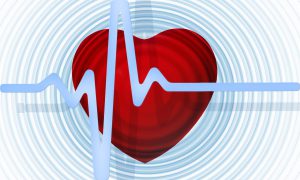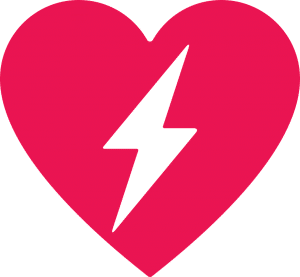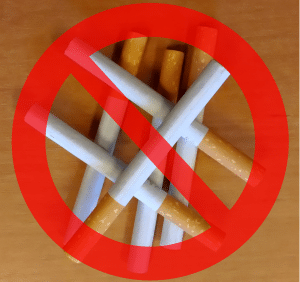Heart disease is a scary thing. But we can certainly be thankful for something these days: we know a whole lot more about it, including that it’s absolutely not just a huge risk for men, as many people once believed. In fact, doctors have been trying to get the word out for a long time now that heart disease is actually the number one killer of women in the United States. But it’s not enough that we (hopefully) know this, we also need to know how heart disease looks different in women, so we can recognize it and combat it – and save lives.
The Number 1 Killer of Women
Be honest: what did you think the number 1 killer of women in the U.S. was? Probably breast or a type of gynecological cancer? And you wouldn’t have been alone in not realizing that heart disease is not only the number 1 killer of men in this country, but also the number 1 killer of women. In fact, according to a Cleveland Clinic survey, many people mistakenly believe breast cancer is more of a threat, and scarily, only 20% of millennials knew that heart disease was such a massive threat to women’s health! 
Not only that, but according to the CDC, despite an increase in awareness over the past decades, only about half (56%) of women recognize that heart disease is their number 1 killer. And worryingly, a 2020 report found a 10-year decline in awareness among women that heart disease is indeed their biggest health threat.
According to Leslie Cho, M.D., director of the Women’s Cardiology Center at the Cleveland Clinic, “I think most people believe that breast cancer, or gynecological cancer, tends to be the biggest killer in women, but it still continues to be heart disease. The reason why that’s so important is because 90% of heart disease comes from risk factors that you can control – blood pressure, cholesterol, smoking, diabetes.”
Dr. Cho is right that this can be a very deadly mistake. After all, heart disease killed 301,280 women in 2019, meaning it caused around 1 in every 5 female deaths. And around 1 in 16 women aged 20 and older (6.2%) have coronary artery disease, the most common type of heart disease in the United States, meaning many more women are at risk of dying.
But knowledge is power! Knowing all this, as Dr. Cho suggested, means we can do something about it. But before we get to prevention, let’s get a little more knowledge about women and their risks. Specifically, let’s talk about what warning signs women should be looking out for.
The Subtle Signs of Heart Disease in Women
We’ve all seen depictions of men having heart attacks on TV, and many of us have been told there are certain signs to look out for. These include classic symptoms like chest pain, shortness of breath, and pain in the left arm. But the signs of heart disease and resulting issues can be less well-known in women.
According to the American Heart Association journal Circulation, symptoms of heart disease might be more subtle and varied in women than in men. One of the study’s authors, Corrine Jurgens, an associate professor at the Connell School of Nursing at Boston College, says that understanding the differences in symptoms is particularly important for women, since women tend to be diagnosed with heart disease later in life than men. And when women are older, they may have other underlying conditions that could make identifying subtle symptoms of heart disease much more difficult.
So what could you be missing? Check out some of the subtle differences, or ways that diagnosis can be complicated in women:
Heart attack

It’s true that men are twice as likely as women to have a heart attack, but women need to know how to recognize the symptoms, especially since they can experience more symptoms than men do. Their signs might be more subtle and different from (or in addition to) the classic chest pain and radiating pain in the back, arm, neck, jaw, or arm. Symptoms in women can include nausea, lightheadedness, extreme fatigue, and cold sweats.
According to Dr. Cho, “30% of women have atypical symptoms, so they tend to have things like shortness of breath, or extreme fatigue, so if you feel these symptoms, especially with exertion, it’s really important to go and be seen by your physician.”
Heart failure
This condition, which usually occurs after a heart attack, usually presents itself as shortness of breath, but symptoms usually build up over time and can also include upset stomach, vomiting, loss of appetite, fatigue, mood changes, and trouble with memory. But women with heart failure have a wider variety of symptoms, such as sweating, unusual swelling, heart palpitations, and feelings of heartburn, which are often accompanied by depression and anxiety. That means it can be hard to determine whether symptoms (like fatigue) are due to depression, heart disease, or both.
Arrhythmia
An irregular heartbeat often doesn’t have any symptoms in men, but women might experience a fluttering in the chest, meaning they have a better chance of detection if they know what to look out for!
Peripheral artery disease
This condition occurs when cholesterol builds up in the arteries that carry blood to the extremities, usually the legs, and can lead to amputation and can increase the risk of heart attack and stroke. There are symptoms that accompany it, including leg and foot pain or heaviness, difficulty walking, and leg heaviness. While both sexes often chalk the symptoms up to other conditions of older age, women are especially likely to confuse the symptoms with conditions that affect the bones.
Heart valve disease
This occurs when one or more valves in the heart doesn’t work properly, and can lead to a complication called aortic stenosis, or when the valve that allows blood to flow from the heart to the rest of the body is narrowed, restricting that blood flow. While men are more likely to experience chest pain with valve disease, women tend to report more trouble catching their breath, especially when or after exercising.
Reducing Your Risk
So now we know more about what women should be looking out for, and the dangers of mistaking symptoms of heart problems with symptoms of other conditions seen in older women. But now it’s time to look at ways of reducing your risk in the first place! To lower your risk of developing heart disease, it’s important to:
- Manage your stress
- Know your blood pressure, and keep it under control
- Get tested for diabetes

- Quit smoking
- Limit your alcohol consumption to one or fewer drinks per day
- Eat a healthy diet, including plenty of fresh fruits and veggies and whole grains
To all you women out there: we know you’ve got big hearts, but we also want them to be healthy hearts! That means knowing 3 things: that women are at a very big risk of dying from heart disease, that there are subtler signs of it in women than in men (or that it can be mistaken for other conditions), and that there are ways to reduce your risk. Just that little bit of knowledge can make all the difference, and save your life!
Co-written by Joanna Bowling